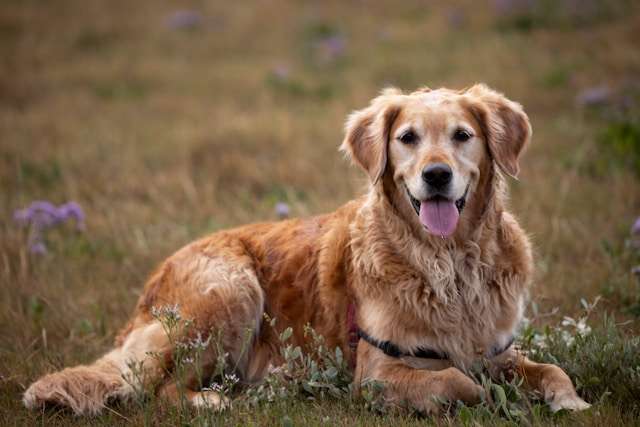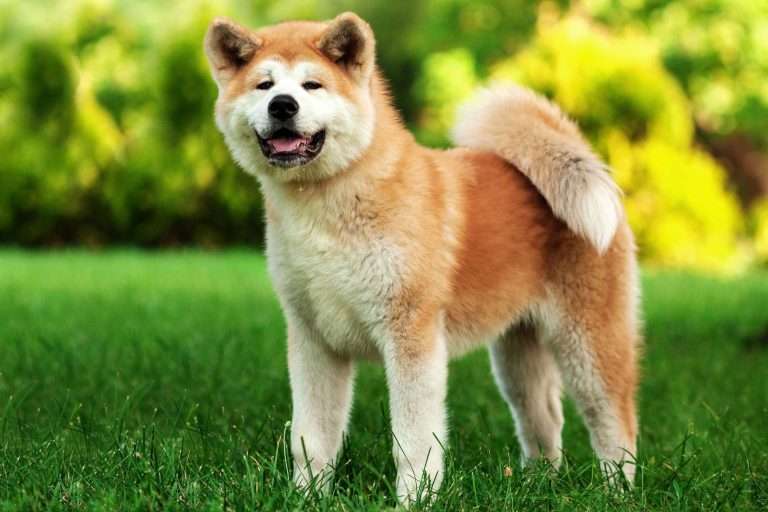Best Dog Food Options for German Shorthaired Pointers in 2025

Best Dog Food Options for German Shorthaired Pointers. German Shorthaired Pointers are high-energy dogs built for action and endurance, requiring optimal nutrition to thrive. Whether your dog is chasing prey or enjoying a long hike, their diet is crucial in keeping them healthy and energetic.
This guide will show you how to choose the right food to fuel your active lifestyle and maintain muscle health. To learn more about supporting your pointer’s energy and performance, check out our detailed nutrition tips and best dog food for sporting breeds.
Table of Contents
Understanding the Nutritional Needs of German Shorthaired Pointers
Feeding your German Shorthaired Pointer (GSP) requires understanding their unique nutritional needs. These athletic dogs need food that fuels their energy, supports muscle health, and sustains their active lifestyle.
High Protein Requirements
German Shorthaired Pointers are muscular dogs with high energy demands, making protein an essential part of their diet. Protein supports muscle maintenance and recovery, keeping your GSP ready for action. Look for high-quality protein sources like chicken, lamb, or fish in their food. A protein-rich diet is essential for hunting or sporting dogs who engage in strenuous activity.
Need more details on protein-rich diets for active breeds? Explore the best dog food for sporting breeds to find ideal options.
Essential Fats for Energy
Fats are more than a calorie source—they provide sustained energy for high-performance activities like hunting or agility training. Choose dog foods with healthy fats like omega-3 and omega-6 fatty acids from fish oil or flaxseed. Look for a fat content of at least 12% to 18% in their diet to ensure your dog can keep up with an active schedule.
For further reading on balanced diets for active dogs, check out A Guide to German Shorthaired Pointers.
Vital Vitamins and Minerals
German Shorthaired Pointers benefit greatly from vitamins and minerals that support their growth and recovery:
- Calcium & Phosphorus: Keep bones strong and joints healthy.
- Omega-3 Fatty Acids: Promotes a glossy coat and reduces inflammation.
- Vitamin E & Zinc: Supports immune health and keeps skin resilient.
Supplementing their diet with vegetables like sweet potatoes, carrots, and spinach can provide additional nutrients.
The Importance of Hydration
Staying hydrated is critical for the health and performance of a GSP. Water is vital for active dogs to maintain energy levels and overall well-being. While fresh water should always be available, you can boost their hydration through wet dog food or by adding bone broth to dry kibble. Not only does this enhance hydration, but it also adds flavor your dog will love.
If you’re curious about how much your dog should eat or drink daily, this German Shorthaired Pointer Feeding Guide provides a detailed breakdown.
Top Recommended Dog Food for German Shorthaired Pointers
Choosing the best dog food for your German Shorthaired Pointer (GSP) is critical to keeping them healthy, fit, and energetic. Whether picking dry kibble, wet food, or exploring raw diets, it’s all about meeting their nutritional needs with quality ingredients.
Best Dry Dog Food Options
Dry food, or kibble, is a convenient, long-lasting option that maintains its nutritional profile well. For German Shorthaired Pointers, focus on high-protein, nutrient-dense options that support their active lifestyle.
Some of the best-rated dry dog food choices include:
Orijen Original Dry Dog Food
Pros: High-quality, biologically appropriate ingredients; rich in protein from fresh chicken, turkey, and fish.
Cons: Expensive and can be too rich for some dogs with sensitive stomachs.Purina Pro Plan Sport Formula
Pros: Specifically designed for active, energetic dogs; includes real chicken as the first ingredient, plus omega-3 for joint health.
Cons: Includes grains, which some dogs with sensitivities might not tolerate.
Dry food is an excellent choice for dental health as the crunchy texture helps reduce plaque buildup. See Best Hunting Dog Breeds for more nutrition tips for active dogs.

Photo by Brixiv
Best Wet Dog Food Options
Wet food is ideal for picky eaters and provides extra hydration, which is crucial for active dogs.
Here are some recommended wet food options:
Merrick Grain-Free Wet Dog Food
rich in vitamins and minerals.
Pros: It has high protein content from deboned beef or chicken and is
Cons: It is more premiumthan other wet food brands and can spoil quickly once opened.
Royal Canin Veterinary Diet Wet Dog Food
Pros: Perfect for addressing specific health needs such as skin sensitivity or digestive issues.
Cons: Only available with a prescription and is costlier than standard options.
Wet food can be mixed with kibble to improve flavor while maintaining texture variety. Check out the German Shorthaired Pointer Feeding Guide for a detailed feeding guide tailored for German Shorthaired Pointers.
Raw Feeding Options
For owners seeking a natural approach to nutrition, raw feeding mirrors what dogs would eat in the wild. It typically includes raw meat, bones, and some vegetables.
Benefits of raw diets include:
- Shinier coats and healthier skin
- Improved digestion and smaller stools
- Higher energy levels
However, raw feeding requires careful handling to minimize the risks of bacterial contamination. Always source ingredients from trusted suppliers and consult your vet about portion sizes and dietary balance.
Some ready-made raw food brands to consider:
- BARF World Raw Dog Food: A balanced, pre-portioned raw diet for easy feeding.
- Primal Pet Foods: Offers convenient frozen raw meals tailored for active dogs.
While raw feeding can be beneficial, it requires a more significant time and financial commitment. Learn more about performance-focused diets by exploring A Guide to German Shorthaired Pointers.
Each feeding option has strengths and limitations, so choosing the best one largely depends on your Pointer’s activity levels, taste preferences, and unique health needs.
Common Feeding Mistakes to Avoid
Proper nutrition is essential for German Shorthaired Pointers, a breed known for its boundless energy. However, feeding mistakes can have lasting effects on their health. Here’s what you need to know to improve feeding habits and ensure your dog thrives.
Overfeeding and Weight Management
Overfeeding is one of dog owners’ most common mistakes, and it can be particularly harmful to high-energy breeds like German Shorthaired Pointers. Despite their active lifestyles, this breed isn’t immune to weight gain. Carrying excess weight can strain their joints, leading to arthritis or decreased mobility.
How can you avoid overfeeding?
- Monitor portion sizes based on the dog’s age, weight, and activity level.
- Avoid feeding table scraps and excessive treats.
- Stick to a consistent feeding schedule to maintain calorie control.
Regular exercise is another cornerstone of weight management. If your dog’s activity level drops, reduce their calorie intake accordingly. Need more insights? Explore Feeding Large Breed Dogs: Nutrition Tips for practical guidelines on portion control.
Ignoring Allergies and Food Sensitivities
German Shorthaired Pointers may develop sensitivities to specific proteins, grains, or additives commonly found in commercial dog foods. These allergies can manifest as itchy skin, ear infections, or digestive upset. Ignoring these signs can lead to chronic health problems.
How to identify and manage food sensitivities:
- Start with limited-ingredient diets to isolate potential allergens.
- Introduce new foods one at a time to monitor your dog’s reaction.
- Consult your veterinarian for allergy testing if issues persist.
By being proactive, you can ensure their meals are nutritious and safe. For additional resources on avoiding common mistakes in dog feeding, you can check Biggest Feeding Mistakes Pet Owners Make.
Relying Solely on Generic Dog Food
Grabbing any generic dog food off the shelf is tempting because it’s convenient and affordable. However, these products often lack the tailored nutrition that German Shorthaired Pointers need. Ingredients like fillers, artificial additives, or low-quality protein can impact energy levels and well-being.
Why opt for breed-specific or high-quality dog food?
- Tailored brands meet the breed’s high protein and fat requirements.
- Quality ingredients improve coat health, digestion, and muscle recovery.
- They reduce the risk of nutritional deficiencies that generic food might miss.
For more guidance on choosing the perfect diet, read Nutrition Tips, which covers how to effectively meet your dog’s specific needs.

Photo by MART PRODUCTION
Avoiding these common feeding mistakes can dramatically improve your dog’s health, energy, and quality of life. German Shorthaired Pointers thrive when their diet is treated as another form of care, ensuring that it supports their every need. Stay mindful of what goes into their bowl—one of the simplest ways to keep them happy and healthy.
Special Diets for Different Life Stages
German Shorthaired Pointers (GSPs) thrive when their diet is adjusted to match their life stage. Puppies, adults, and seniors—each stage has distinct nutritional demands. Feeding your GSP appropriately through their different growth stages ensures their overall health, energy, and longevity.
Puppy Nutrition
Puppies are growing fast—they’re like little athletes in training! They need a protein-rich diet, calories, and essential nutrients to support their development. Protein aids muscle and tissue growth, while calories fuel their boundless energy.
Key things to include in a puppy’s diet:
- High-quality protein sources like chicken, lamb, or fish.
- DHA (an omega-3 fatty acid) for brain and vision development.
- Calcium and phosphorus for strong bones and teeth.
Puppies should be fed three to four smaller meals daily to avoid overloading their digestive systems. For more insights on premium puppy diets, check out Dog Nutrition Guidelines.
Adult Dog Nutrition
Adult German Shorthaired Pointers are in their prime—robust, energetic, and always on the go. Their diet should focus on maintaining muscle health and sustaining their high-energy lifestyle. Proper nutrition prepares them for hunting, hiking, or agility training.
For active adult dogs:
- Look for foods with at least 25% protein to support muscle recovery.
- Include healthy fats (like omega-3s) for sustained energy.
- Don’t forget antioxidants (from fruits and veggies) to support cell health.
Feeding adults twice a day is ideal to keep them fueled without overfeeding. Interested in finding the best diets for active dogs? Visit Best Dog Food for Health Issues.

Photo by Helena Lopes
Senior Dog Nutrition
As German Shorthaired Pointers age, their activity levels may decrease, and their dietary needs shift toward maintenance and prevention. Senior dogs often benefit from lower-calorie diets to prevent weight gain and reduced protein levels that are easier to digest but still sufficient to maintain muscle mass.
Essential considerations for senior dogs:
- Add joint health supplements like glucosamine and chondroitin.
- Focus on fiber for better digestion.
- Choose lower-calorie foods to prevent obesity—important as their metabolism slows.
For seniors, portion control and regular vet check-ups are key to avoiding health issues like arthritis or diabetes. Explore Life Stage Nutrition for Pets to learn how aging pets can thrive through diet adjustments.
Providing the correct nutrition tailored to each life stage will keep your German Shorthaired Pointer healthy and vibrant, from playful puppyhood to their golden years.
How to Transition Your German Shorthaired Pointer to New Food
Transitioning your German Shorthaired Pointer (GSP) to a new food involves more than just pouring the new kibble into its bowl. A sudden dietary change can upset their stomach, cause discomfort, and lead to issues like diarrhea. To avoid these problems, a thoughtful and gradual transition is key.
Gradual Transition Process
A slow, steady transition gives your GSP’s digestive system time to adapt to the new ingredients. Rushing the process can result in an upset stomach and make the transition unpleasant for you and your dog. Here’s a simple step-by-step guide:
- Start Small: Mix 25% of the new food with 75% of the old food in the first 2-3 days.
- Increase Gradually: Shift to a 50:50 ratio of new and old food for 3-4 days.
- Majority New: On days 7-8, the bowl should contain 75% new and 25% old food.
- Fully Transitioned: By day 10, your dog should eat 100% of the new food.
Keep the process slower if you have a picky eater or a dog with a sensitive stomach. With patience, you can make the switch seamless. For more insights on nutritious food options for dogs, read The Farmer’s Dog Food: A Nutritious Choice.
Monitoring Digestive Health
While transitioning to a new food, keeping an eye on your GSP’s digestive health is crucial. Their stomach might not agree with certain ingredients in the latest food, leading to signs of discomfort. So, what should you watch for?
- Loose Stools or Diarrhea: A common sign that your dog’s digestive system is struggling.
- Vomiting: Indicates potential intolerance to the new food.
- Decreased Appetite: Your pup might refuse to eat if it dislikes the taste or texture.
- Lethargy: Changes in energy levels can hint at an issue with the new diet.
If any signs persist for over a day or two, slow the transition process or consult your vet. You could also explore wet foods, which are easier for some dogs to digest. Learn more in the Purina High Protein Puppy Food Pate Chicken Guide.
External Resources for Transitioning Tips
Looking for more tips? Check out How to Switch Dog Foods for detailed advice on minimizing digestive disruptions. Or read the Changing Dog Food Guide to help your pup adjust smoothly.

Photo by Arian Fernandez
A smooth transition to a new diet ensures your German Shorthaired Pointer stays healthy and happy. Patience is your best tool!
FAQ
Dog owners often have questions about feeding German Shorthaired Pointers (GSPs). From diet specifics to addressing common feeding challenges, here’s a compilation of answers to some frequently asked questions.
What Is the Best Protein Source for My GSP?
High-quality animal proteins are the top choice for German Shorthaired Pointers. Protein supports their muscular build and fuels their active lifestyle. Look for sources like:
- Chicken: Rich in lean protein and easy to digest.
- Fish: Loaded with omega-3 fatty acids and a shiny coat for joint health.
- Lamb: An excellent option for dogs with sensitivities to chicken or beef.
For additional guidance on choosing protein-rich diets for high-energy breeds, refer to A Guide to German Shorthaired Pointers.
How Do I Know If My German Shorthaired Pointer Has Food Allergies?
Food allergies often manifest as skin irritation, ear infections, or digestive issues. If you notice symptoms like excessive scratching, vomiting, or loose stools:
- Switch to a limited-ingredient diet to identify triggers.
- Avoid common allergens like corn, soy, or artificial additives.
- Consult your vet for an allergy test or elimination diet plan.
For suggestions on managing sensitivities, this Dog Breed Guide provides insights into specialized feeding.
Should I Choose Grain-Free Dog Food?
Not necessarily. While grain-free options are widely available, grains like oats or rice can be beneficial:
- Provide essential dietary fiber for digestion.
- Offer a stable source of energy for active dogs.
- Reduce risks of heart-related issues associated with some grain-free diets.
Choose based on your dog’s needs and consult your vet if unsure. More details about nutritional choices can be found on Best Dog Food for German Shorthaired Pointers.
How Often Should I Feed My GSP?
For adult GSPs, two meals a day is recommended to prevent bloating and maintain energy. Puppies, however, require:
- 3–4 meals daily for even calorie distribution.
- High-calorie puppy food tailored to growth needs.
Depending on the dog’s development, transitioning to adult food typically occurs around 12–15 months. For help with food transitions, look at How to Switch Dog Foods.
Can I Incorporate Raw Food Into My Dog’s Diet?
Yes, raw feeding is an option, but it requires safe preparation. A balanced raw diet typically includes:
- Raw meat (e.g., chicken or turkey).
- Edible bones for calcium.
- Fruits and vegetables like carrots or spinach.
Keep in mind that raw feeding comes with risks of bacterial contamination. It’s crucial to research or consult your vet before introducing a raw diet. Learn more about balancing performance-focused diets in this guide.
What Should I Do If My GSP Becomes Overweight?
Weight gain can stress your dog’s joints and decrease mobility. Tackle this by:
- Adjusting Portions: Follow manufacturer recommendations and factor in activity levels.
- Incorporating Exercise: Activities like running or swimming are ideal for GSPs.
- Choosing Low-Calorie Foods: Foods with high protein but moderate fat help maintain lean muscle.
For detailed tips on keeping your dog fit, visit the Ultimate Dog Care Guide.

Photo by Zen Chung
From selecting the proper diet to handling special needs, asking the right questions is the first step to ensuring your German Shorthaired Pointer’s well-being.
Conclusion
Selecting the right dog food for your German Shorthaired Pointer is key to supporting their health and energy needs. From protein-packed options to diets tailored for life stages, feeding your pup well ensures they stay active, healthy, and happy.
Make thoughtful decisions based on your dog’s unique requirements and activity levels. Always check ingredient labels and consult professionals if needed.
To find more tailored choices, visit Nutrition Guides or explore Top Hunting Dog Breeds Every Dog Lover 2025. Prioritize nutrition; your pointer will thank you with boundless energy and affection!






